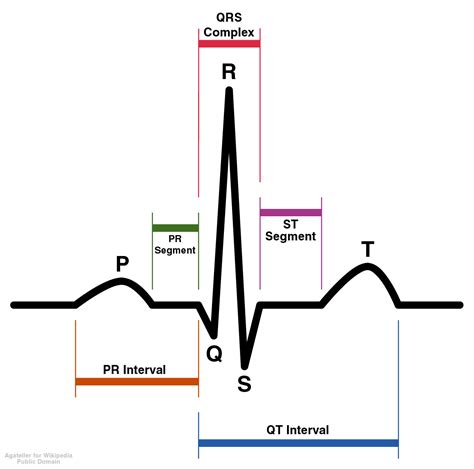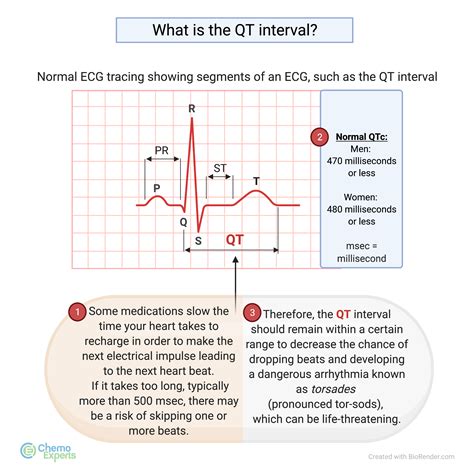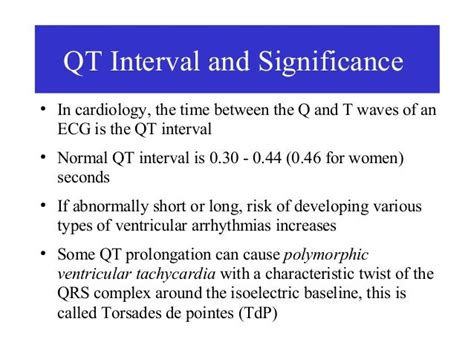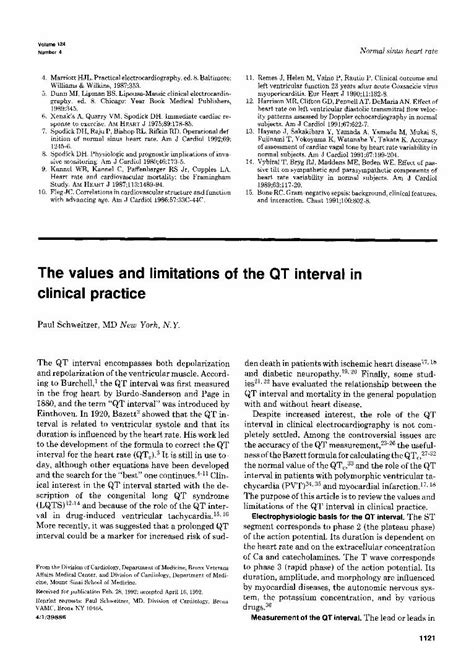Intro
Unlock the secrets of the QT interval in electrocardiograms. Learn the normal QT interval range and its significance in diagnosing heart conditions. Discover the 5 key points to understanding QT interval prolongation, dispersion, and its relationship with Torsades de Pointes, long QT syndrome, and cardiac arrhythmias.
The QT interval is a crucial measurement in electrocardiography (ECG) that can provide valuable insights into the heart's electrical activity. A normal QT interval is essential for maintaining a healthy heart rhythm, and understanding its significance can help identify potential cardiac issues. In this article, we will delve into the five key points of the normal QT interval, exploring its definition, measurement, significance, factors that influence it, and clinical implications.
What is the QT Interval?

The QT interval represents the time it takes for the heart's ventricles to prepare for the next contraction. It is measured from the beginning of the Q wave to the end of the T wave in an ECG tracing. The QT interval is a critical parameter in assessing the heart's electrical activity, as it reflects the time it takes for the ventricles to repolarize and recover from the previous contraction.
How is the QT Interval Measured?

The QT interval is typically measured in milliseconds (ms) and is calculated from the ECG tracing. The measurement is usually taken from the beginning of the Q wave to the end of the T wave, and the resulting value is then corrected for heart rate using a formula such as the Bazett's formula or the Fridericia's formula. This correction is necessary because the QT interval varies with heart rate, and an uncorrected measurement may not accurately reflect the true QT interval.
Significance of the QT Interval

A normal QT interval is essential for maintaining a healthy heart rhythm. Prolongation of the QT interval can lead to serious cardiac arrhythmias, such as torsades de pointes, which can degenerate into ventricular fibrillation and sudden cardiac death. Conversely, a short QT interval can also be associated with an increased risk of cardiac arrhythmias. Therefore, accurate measurement and interpretation of the QT interval are crucial in identifying individuals at risk of cardiac complications.
Factors that Influence the QT Interval
Several factors can influence the QT interval, including:
- Heart rate: The QT interval varies with heart rate, and a faster heart rate can lead to a shorter QT interval.
- Age: The QT interval tends to be longer in older adults.
- Sex: Women tend to have longer QT intervals than men.
- Electrolyte imbalance: Abnormal levels of potassium, magnesium, and calcium can affect the QT interval.
- Medications: Certain medications, such as anti-arrhythmics and antipsychotics, can prolong the QT interval.
- Cardiac conditions: Certain cardiac conditions, such as heart failure and myocardial infarction, can affect the QT interval.
Clinical Implications of the QT Interval

The QT interval has significant clinical implications in various medical settings. For example:
- In cardiology, a prolonged QT interval can indicate an increased risk of cardiac arrhythmias and sudden cardiac death.
- In emergency medicine, a prolonged QT interval can be a sign of cardiac toxicity or electrolyte imbalance.
- In pharmacology, the QT interval is an important parameter in the development and testing of new medications, as certain medications can prolong the QT interval and increase the risk of cardiac arrhythmias.
In conclusion, understanding the normal QT interval is essential in maintaining a healthy heart rhythm and identifying potential cardiac issues. By recognizing the significance of the QT interval and the factors that influence it, healthcare professionals can provide better care for patients and prevent cardiac complications.
What is a normal QT interval?
+A normal QT interval is typically considered to be between 350-450 ms in adults.
What can cause a prolonged QT interval?
+A prolonged QT interval can be caused by various factors, including heart rate, age, sex, electrolyte imbalance, medications, and cardiac conditions.
What are the clinical implications of a prolonged QT interval?
+A prolonged QT interval can indicate an increased risk of cardiac arrhythmias and sudden cardiac death, and is an important parameter in various medical settings, including cardiology, emergency medicine, and pharmacology.
We hope this article has provided you with a comprehensive understanding of the normal QT interval and its significance in maintaining a healthy heart rhythm. If you have any further questions or concerns, please do not hesitate to comment or share this article with others.

